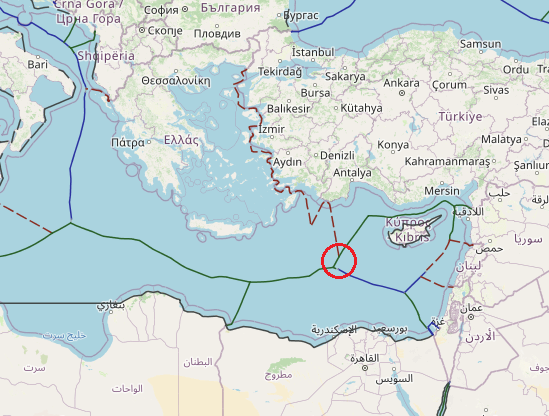In accordance with international law (both UNCLOS and customary), the delimitation of the continental shelf or the EEZ between States with opposite or adjacent coasts shall be effected by agreement on the basis of international law in order to achieve an equitable result. Cyprus has repeatedly called upon Turkey to enter into negotiations for the delimitation of their maritime zones, in accordance with international law. This invitation to Turkey was, in fact, repeated in a letter addressed to the UN Secretary-General, on 12th December 2018. Turkey dismissed any efforts for a peaceful negotiation, and has resorted to actions that jeopardize and hamper the reaching of a final agreement, in violation of Articles 74(3) and 83(3) UNCLOS, which reflect customary principles such as good faith, self-restraint and peaceful settlement of disputes
View More maritime boundaries between Turkey and CyprusTag: Cyprus internal waters
maritime boundaries between Greece and Cyprus
The strategic relevance of the Greek and Cypriot EEZs can be further perceived if noted that Greece and Cyprus stand at the crossroad of three continents and jointly share a common border with another ten countries, out of which with eight of them common sea borders also exist. This modification of the Mediterranean geography is certainly directly related to the application to issues of fisheries, circular economy renewable energy policies and offshore energy challenges. However, if we further consider the outlook shaped in the offshore production of hydrocarbons in Greece, Cyprus and Israel, briefly portrayed by the ex-Greek PM as having the potential to cover half of the needs in natural gas in Europe in the coming 30 years, we realize that it is no hyperbole to consider the Mediterranean as the Middle-East of the 21st century.
View More maritime boundaries between Greece and Cyprus

